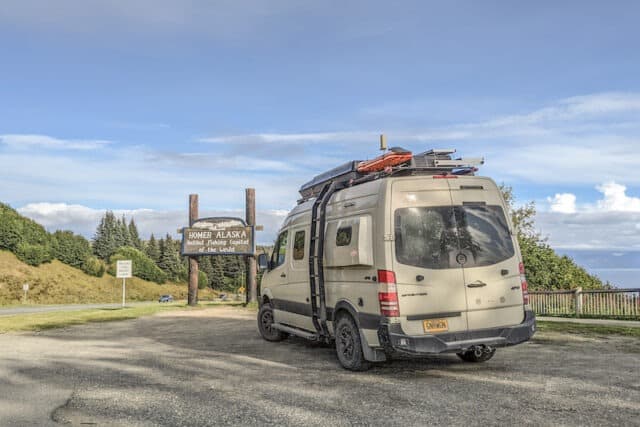By: Kelly Laustsen and David Somach@Gnrwgn
The Kenai Peninsula in southcentral Alaska is a place of wonder from the 700 square miles of the Harding Icefield in Kenai Fjords National Park to the turquoise blue, salmon-filled Kenai River. The large peninsula is reached by driving southeast from Anchorage along the Turnagain Arm where a narrow piece of land connects the peninsula to the rest of Alaska. It is bordered by the Cook Inlet on the west, Gulf of Alaska on the South and Prince William Sound on the east, resulting in a lot of coastline and impressive fjords. While in Alaska for the summer, we spent about two weeks on the peninsula, broken up by returns to Anchorage and ventures farther north. It certainly isn’t necessary to have a van to explore the area, with most roads paved and in good condition. However, we found some of our favorite camp spots in Alaska just off the road where we often appreciated our ground clearance, 4×4 and short length. Below are 5 favorite places we camped on the peninsula and a little bit about what we did while there.
Portage Lake Bridge
A camp spot under a bridge might not sound glamorous, but the views from this campsite were well worth a little bit of road noise. We came across this spot after trying several nearby spots along a river running from Portage Lake and finding them too busy. The spot was a quick walk from a visitor’s center with beautiful views of the lake, a water bottle fill station, restrooms and interesting exhibits. We originally visited this spot while towing a small trailer for a visiting friend and returned with other friends who were tent camping and looking to avoid a rainy evening. A bridge does have its perks when it comes to shelter! Portage Lake sits right next to the Anton Anderson Memorial Tunnel, the longest highway tunnel in North America at 2.5 miles. The tunnel is a single lane and serves vehicles and trains, so it alternates directions of vehicle traffic on the half-hour and shuts down when a train comes through. We liked the tunnel so much we drove through it on three separate occasions. It leads to a beautiful little town called Whittier on the Prince William Sound.


Kenai Lake Shore
Easily our top spot in Alaska, we returned several times to a large camping area on the shore of Kenai Lake. When we first visited the spot, we questioned whether our van could make it to the beach because of the low tree branches and possible scrapes. However, we decided the spot was too good to pass up. Why have a rugged van if you don’t use it? While short, the access road to the beach is steep with unavoidable deep holes. We even came to this beach with the trailer and the van made it out without any problems and only a little bit of struggle. Like the Kenai River, the color of Kenai Lake is a greenish blue due to the glacial silt in the water. On our last visit to Kenai Lake, we enjoyed an impressive fireworks display from a fellow camper, but otherwise we found the spot quiet and peaceful. Nearby, the Russian River flows into the Kenai River, and both rivers are known for their salmon fishing. While we don’t fish, we did enjoy seeing the salmon spawning in the river and jumping at the Russian River Falls.
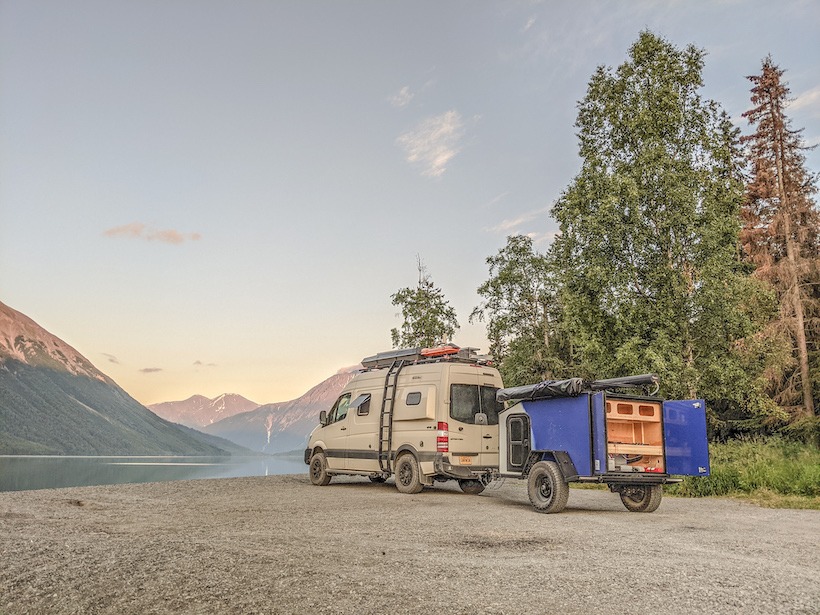
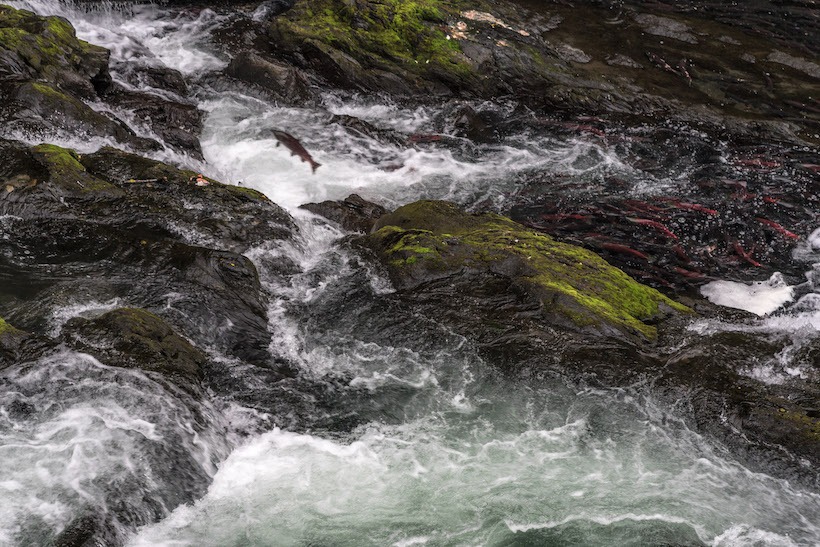
Kasilof Beach on the Cook Inlet
After several years with our van and extensive traveling on the southeast coast of the United States, our first experience camping on a sandy beach wasn’t until the Kenai Peninsula. A special land use area at the mouth of the Kasilof River on the west coast of the Peninsula allows camping and is highly used for dipnetting in season. We camped on the beach after the fishing season and just before businesses and attractions closed for the year. We expected lots of other campers given the beautiful weather, but only saw a few other vehicles far in the distance. Given that our van weighs about 9,000 pounds, we were nervous about driving on the soft sand without taking the time to air down so we didn’t stray too far from the beach access. Earlier in the day, we chatted with a museum host in the town of Soldotna who spends her summer in an RV on the museum property looking after the grounds. What started as a quick hello turned into a long conversation and the woman gifting us three salmon fillets, with the excuse she had more than she could use. We have found such generosity here in Alaska, especially when it comes to sharing recommendations and fish. On the beach we set up our portable fire pit and enjoyed grilled salmon and s’mores. The next morning, we decided to try and reverse back up the beach to the access road, not wanting to risk turning around in sand without tracks. After backing up a few feet, we felt our tires starting to bury themselves and opted to air down the tires instead of risking getting stuck. After dropping the tire pressure significantly, the van reversed quickly, got traction and easily reversed off the beach. Lesson learned. It is worth the time to air down when driving on sand, even if it’s just for a short distance!
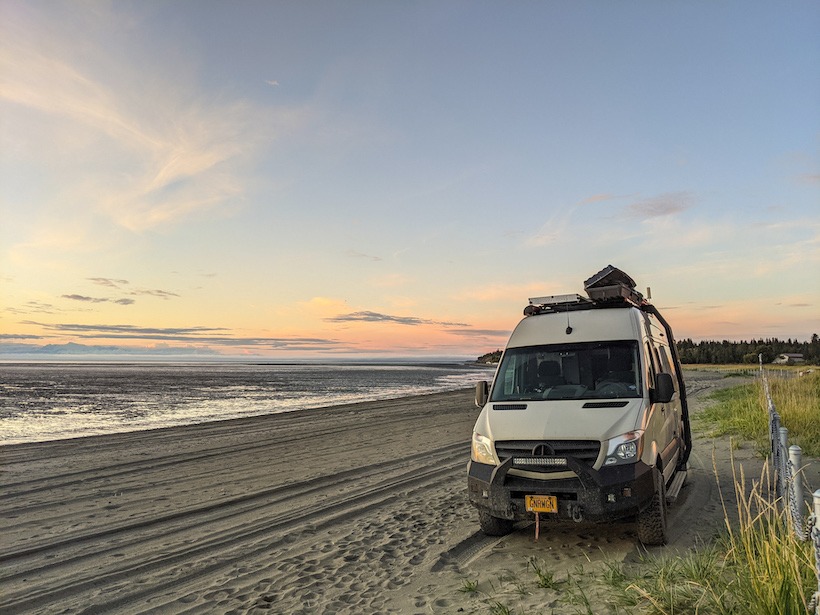
Homer Spit
The Homer Spit is a narrow piece of land on the southern tip of the Kenai Peninsula extending about 4.5 miles into Kachemak Bay. It is a hot spot for fishing, with Homer nicknamed the “Halibut Capital of the World.” The end of the Spit is densely lined with shops, restaurants, charter fishing and sightseeing businesses, making it one of the most tourist-focused places we’ve been in Alaska. As far as we could find, there is no free, legal camping around Homer. We opted to embrace the tourist experience and stayed at two different city-run campgrounds on the Spit, which were basically just parking lots with picnic tables and fire rings. However, the sunny weather and mountain views more than made up for the lack of amenities. While on the Spit, we took a ferry to Seldovia, a small town located farther south and not accessible by road. Seldovia used to be bigger than Homer, a hub of activity with a large fish cannery and businesses along a boardwalk. Now the town is small and quiet, a great spot to relax and explore the coast. We stumbled upon an excellent blueberry picking spot and found the ferry ride reason enough to visit Seldovia.
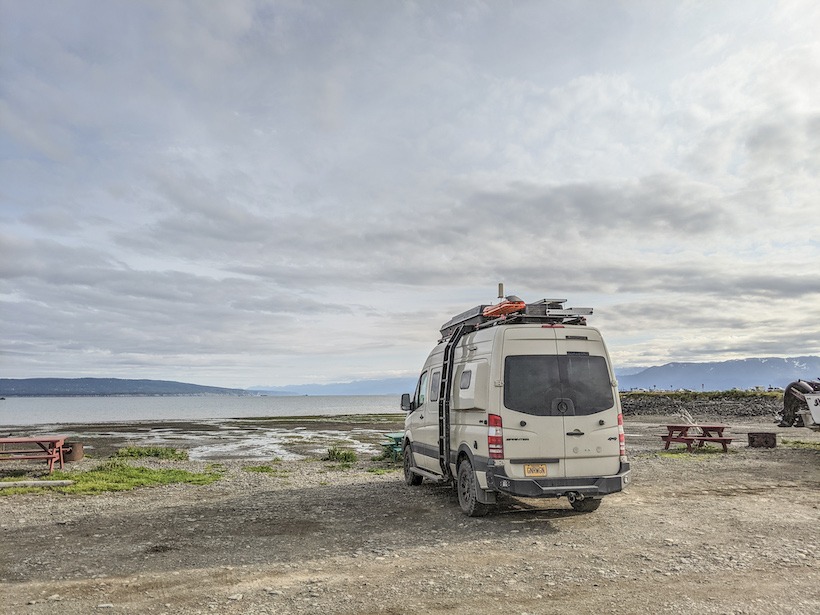
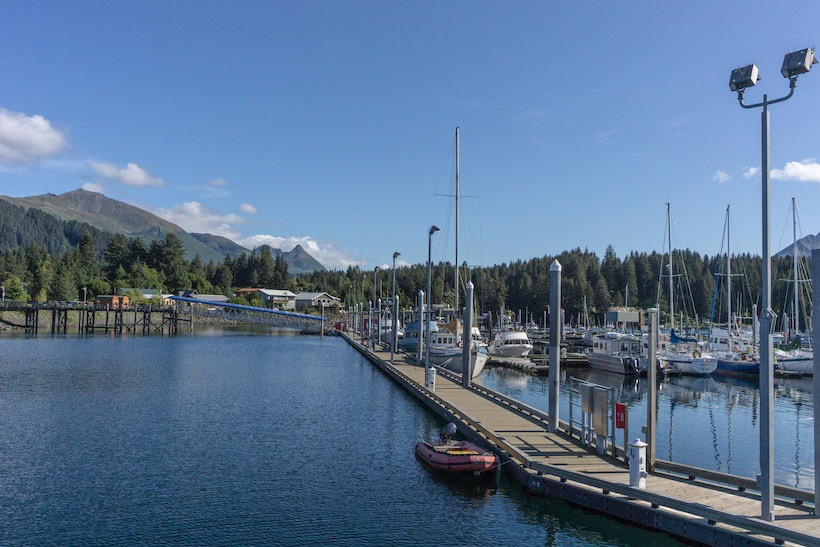
Exit Glacier Road
Kenai Fjords National Park is located in the southern part of the Kenai Peninsula and is only accessed by road on the east side of the park, just outside Seward. Camping is allowed along much of the road, commonly called Exit Glacier Road as it leads to the Exit Glacier Nature Center and provides great views of the glaciers. One of our favorite hikes in Alaska is the eight-mile Harding Icefield Trail, which starts at the Exit Glacier Nature Center. We did the hike three times as we wanted all of our visitors to experience the incredible views of the Harding Icefield, which is 700 square miles with over thirty glaciers flowing out from the icefield. The road is a popular spot for camping, with numerous turnouts in the designated Special Use Area that allows camping for up to eight days. We didn’t start looking for a camp spot until late in the evening, after a full day hiking and dinner in Seward. After striking out at several occupied turnouts, we spied a narrow, steep short turnoff just before a bend in the road. We pulled over to assess the spot, and decided the descent to the spot would be challenging but doable. While we sometimes wish we had more space inside the van, our short length pays off when it comes to parallel parking and tricky camp spots. The turnoff led to numerous secluded camp spots with large fire pits and heavy tree cover. Given the hard to spot turnoff and challenging access, we had the spot to ourselves. Often we find our best camp spots after striking out with more popular spots and having to search a little harder. We are glad we have a vehicle up to the challenge of narrow roads, steep descents, and big rocks.
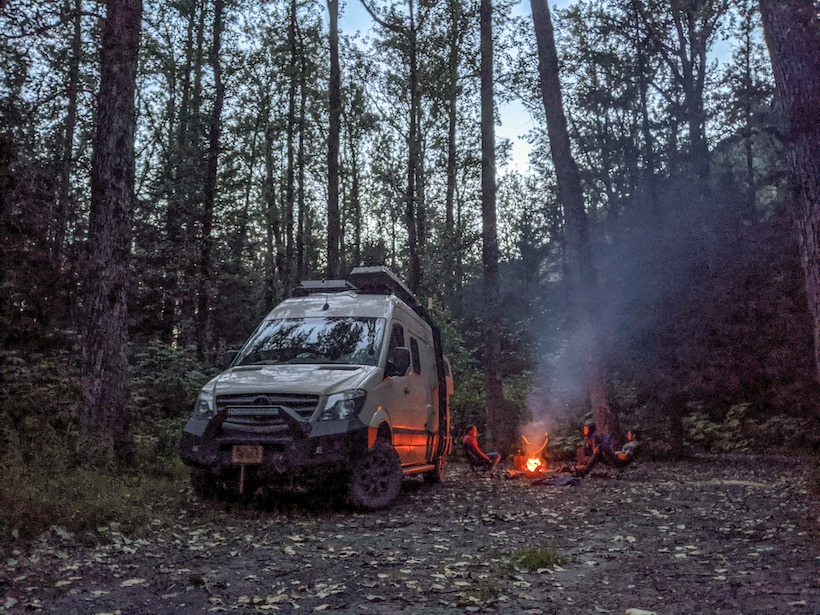
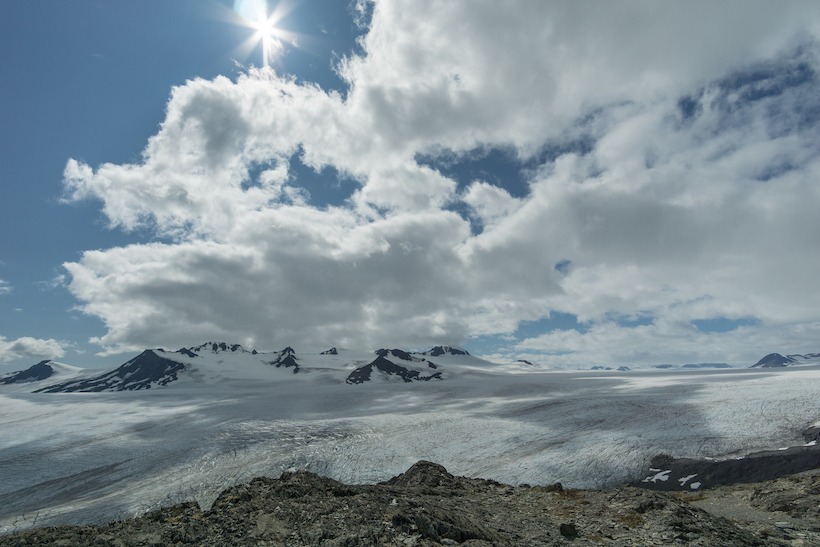
For More Gnar Wagon Alaskan Adventures Click HERE
To Learn more about the Winnebago Revel check HERE
_______________________________________________________







